THE HISTORY OF ARCHITECTURE
Were and why architecture was invented:
Architecture began when humans started to farm (previously were hunters and were nomadic) but when humans learnt to farm they were able to build habitats in one spot. This was the true beginning of architecture. Over time humans learnt and developed an understanding of the principles of construction (materials and tools needed and skills acquired e.g. techniques like the wheel so materials could be transported or the invention of the arch). Once humans had developed an understanding of the materials and skills needed to build a stable comfortable shelter or house they began to develop various structures – tombs (to bury people) then monuments (memorials) then palaces (places for kings to govern) then they moved onto shrines or churches (where they worshiped their gods).
THE ANCIENT WORLD
If we take a look all the way back to ancient Sumerian and Egyptian architecture and compare it to now there has been numerous changes and developments, but what were the changes? – Well lets have a look at them starting with right with Sumerian Architecture.
Sumerian (2500 – 1500 BC): This style of architecture was happening around the same time as Egyptian pyramids were developing but the Sumerians (later, Mesopotamia and Persia) were developing a new structure called the ziggurat (a stepped kind of pyramid). Although this structure was similar to the pyramid it was not a tomb, instead it was a man-made mountain that brought the Sumerian rulers and people closer to their Gods (which were thought to be high up in the eastern mountains). Ziggurats were made from clay-fired bricks and sometimes would be given final touches with coloured glazes.
Egyptian (3,050 BC – 900 BC): Religion played a big part in the ancient Egyptians’ architecture (Tombs, pyramids etc.).The Egyptians built their housing along The Nile River as it was a great of water for growing crops and farming animals. Pyramids were one invention that were developed in this era (Pyramids were large, square pyramid – shaped structures that were made as tombs for the powerful rulers. Making a pyramid was very strenuous because in order to build one you needed large and extremely heavy limestone and granite blocks (2.5 tons), but how did they do this? – Well in fact humans today do not know, but there are many theories. Many believe that the ancient Egyptians put the blocks on wooden sleds or that they wet the sand.
Greek (700 BC-323 BC): Ancient Greek architecture was known for its (columns, temples, statues, theatres and rectangular buildings). One big innovation in this period was the Doric column (This was a very influential invention as it was reused in many other styles later on). This invention were used for the temples that they built (e.g. the Parthenon in Athens)
Roman (44 BC-476 AD): A great example of ancient roman architecture is the Coliseum (in Rome). Their structures were not only large but they had big dome ceilings that were used in large public spaces. Roman architecture was similar to the earlier classical architecture (Greek and Hellenistic) except it was much more decorative. Concrete was also invented around this time, which allowed the romans to build arches, vaults, and domes.
THE MIDDLE AGES
Byzantine (527 to 565 AD): This architectural style started at Byzantium (now called Istanbul). New techniques were introduced (onion dome, pinnacles, turrets, and the introduction of coloured buildings. Ancient roman architecture evolved into detailed mosaics, brick instead of stone and domed roofs but still keeping some classical elements.
Romanesque (800 to 1200 AD): Romanesque architecture began when Rome spread of Europe. Common features of this style were (rounded arches for decoration, development of vaults – barrel vaults and groin vaults, huge doors inset within arches through large walls, Gothic-style towers started to replace Byzantine domes, small decorative windows, Christian churches with a floor plan designed around the Latin cross).
Gothic (1100 to 1450 AD): The gothic movement was around the time of the medieval period. It had many innovations that led to taller and more graceful structures (Pointed arches, ribbed vaulting, flying buttresses etc.). All of these new ideas led to large cathedrals like Chartres and Notre Dame that are still around today.
The Renaissance (1400 to 1600 AD): there are many stages of the Renaissance architecture. At the beginning of Italian renaissance architects like Brunelleschi observed the architecture of Ancient Rome to look at the characteristics of the structures that they built (symmetry, shapes, geometry, and proportion etc.). They also look at common features of classical Roman and Greek architecture (columns, pediments, arches and domes etc.). The spread of the renaissance (across Europe) began around the end of the 15th century. As it spread into France, Spain and Portugal the renaissance was taking over gothic architecture and there was a mix of both styles at this time.
Baroque (1600 to 1830 AD): The Baroque movement was all about grand structures and buildings as the style was mainly symmetrical, dramatic and flamboyant. The wall detail in this movement was a big innovation (architecture started to have more decorations on ceilings, walls and doors).
Rococo (1650 to 1790 AD): This architectural movement was a reaction to the Baroque movement (mainly the harshness of it). Instead it was a lot more fun (more pastel colours, less symmetry very decorative and more romantic). The elegant buildings produced in this time were characterized with (scrolls, vines, shell-shapes, and graceful geometric patterns).
THE MODERN AGE
Neoclassicism (1730 – 1925 AD): This movement was very much inspired by ancient Greek and Roman architecture (aspects of these styles that were used included – columns, statues and detailed decorations). This was also a very important movement as it influenced many of the other styles during this time.
Art nouveau (1890 – 1914 AD): Art nouveau started around the late 1800’s when many people (European artists, graphic designers, and architects) were reacting to neo-classical architecture. They thought that a more natural approach would be better. Art nouveau often incorporated asymmetrical shapes, organic shapes, arches and decorative surfaces with curved, plant-like designs into its style.
Beaux Arts (1895 – 1925 AD): In French Beaux Arts translates to ‘beautiful arts or fine arts’ as the style was very elegant and graceful. Beaux Arts architecture was very symmetrical and grand and its features often included (balconies, columns, wide arches and extravagant decorations – Medallions, flowers etc.).
Neo-gothic (1905 – 1930 AD): Neo-gothic architecture borrowed elements of gothic architecture (gothic style was applied to modern skyscrapers). It often was characterized by (Height, carvings such as gargoyles, pinnacles and pointed windows)
Art deco (1925 – 1937 AD): characterized by (zig zag patterns, geometric designs and patterns, sleek forms cubic shapes and forms, bold lines and shapes. One example of a classic art deco building is The Empire State Building (it has geometric shapes and zig zag patterns.
Modernist (1900 – Present): Modernist architecture was all about function (many past styles focused on nature). While Modernist architecture was a reaction against many traditional styles mass production was a big contribution to modernist architecture (commercial building with big flashings logo on them). There were many styles within modernism, some were:
- Minimalism – (Buildings only included most essential elements, Emphasis was placed on the o frame of the structure, Interior walls were removed, Floor plans were open, Lighting is used to make the lines and planes dramatic, The negative areas around the structure were included in the design.)
- De stijl – colours used in De stijl architecture were the primary colours (red, yellow and blue) and many shades (blacks whites and greys). De stijl still had a simplistic feel about it and used line a lot in its architecture.
- Bauhaus – colours used in Bauhaus architecture often were white, gray, beige, or black. It used elements of classical architecture except in a more simple form (no ornamentation). Many features of this style included (no decoration, stone, steel and glass materials, a flat and straight roof and tall skyscrapers with bold shapes).
Post-modernist (1970s – Present): The architectural style was a reaction against modernist architecture. Post-modern architecture borrowed elements form various past styles to create a new style. While post-modernism incorporates traditional form with new concepts it often also incorporates humour in its style. Many post-modern structures include symbols (these make statements or just satisfy the viewer). One example of post-modern architecture is Phillip Johnson’s AT&T building design (it has many characteristics of a modern skyscraper but at the top there is a large pediment which links back to older styles of architecture).
What role architecture plays:
Architecture has played a massive role in human society. In the early ages (Ancient Egypt) people would make tombs and pyramids. This played a huge role, as it was part of their religion and everyday lives. In Ancient Greek architecture also played a big role (they had theatres, big open areas – as used for the first Olympics ever).
Now, Architecture still plays an immense role in our everyday lives. Besides the fact that architecture gives us good quality shelter (insulation, space, light and aesthetic consideration), it also can be used for purposes such as – educational (e.g. new UTS building designed by Frank Gehry), Commercial and corporate (multinational businesses e.g. Banks) and religious (Churches, Temples, Synagogues and Mosques etc.).

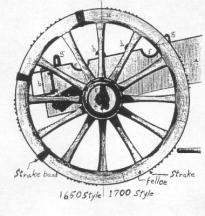
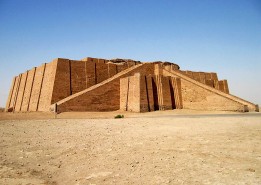
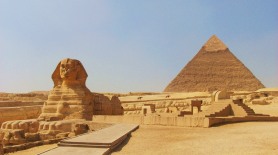
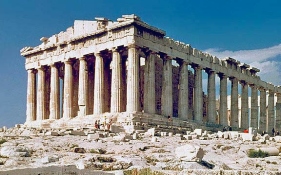
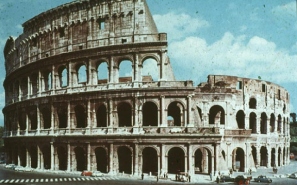

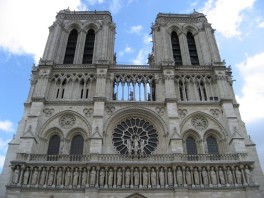
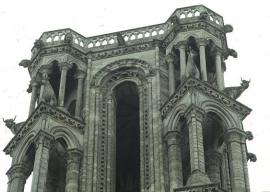
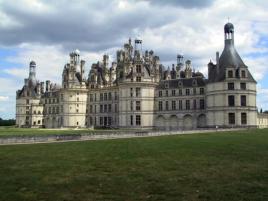
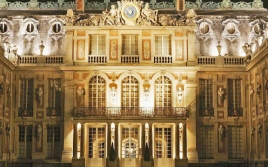

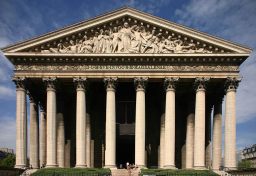
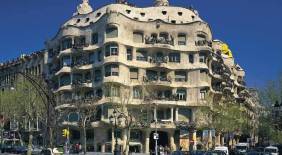



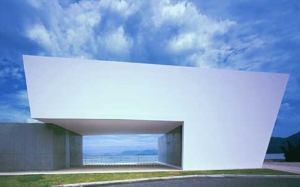
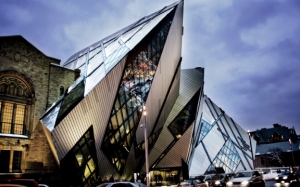
its all g
LikeLiked by 1 person
0: so much work! Congratulations on your effort and hard work Lucien Xavier Robba!
LikeLiked by 1 person
wow this is so good! lots of information, well done 🙂
LikeLiked by 1 person
Thanks liv, Alice and gel you too!
LikeLike